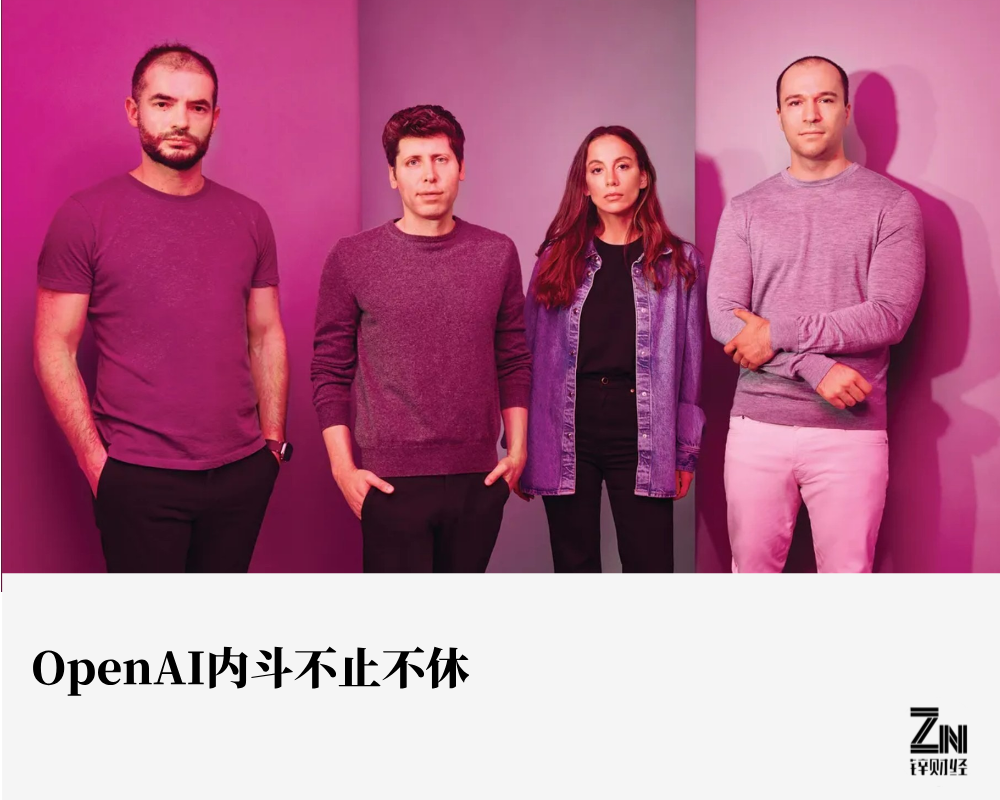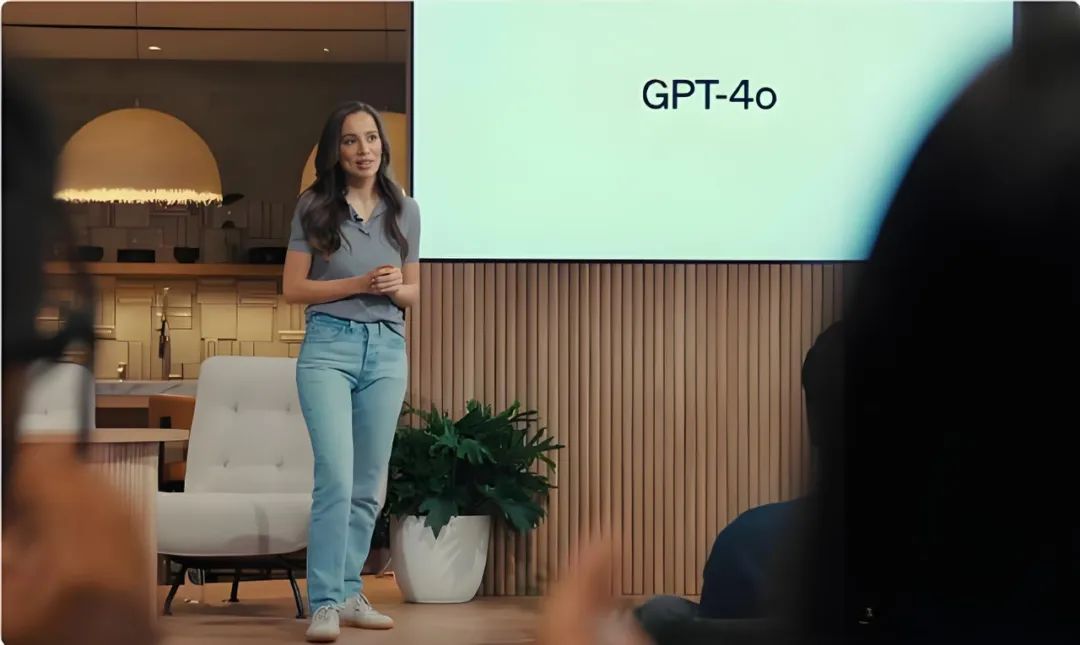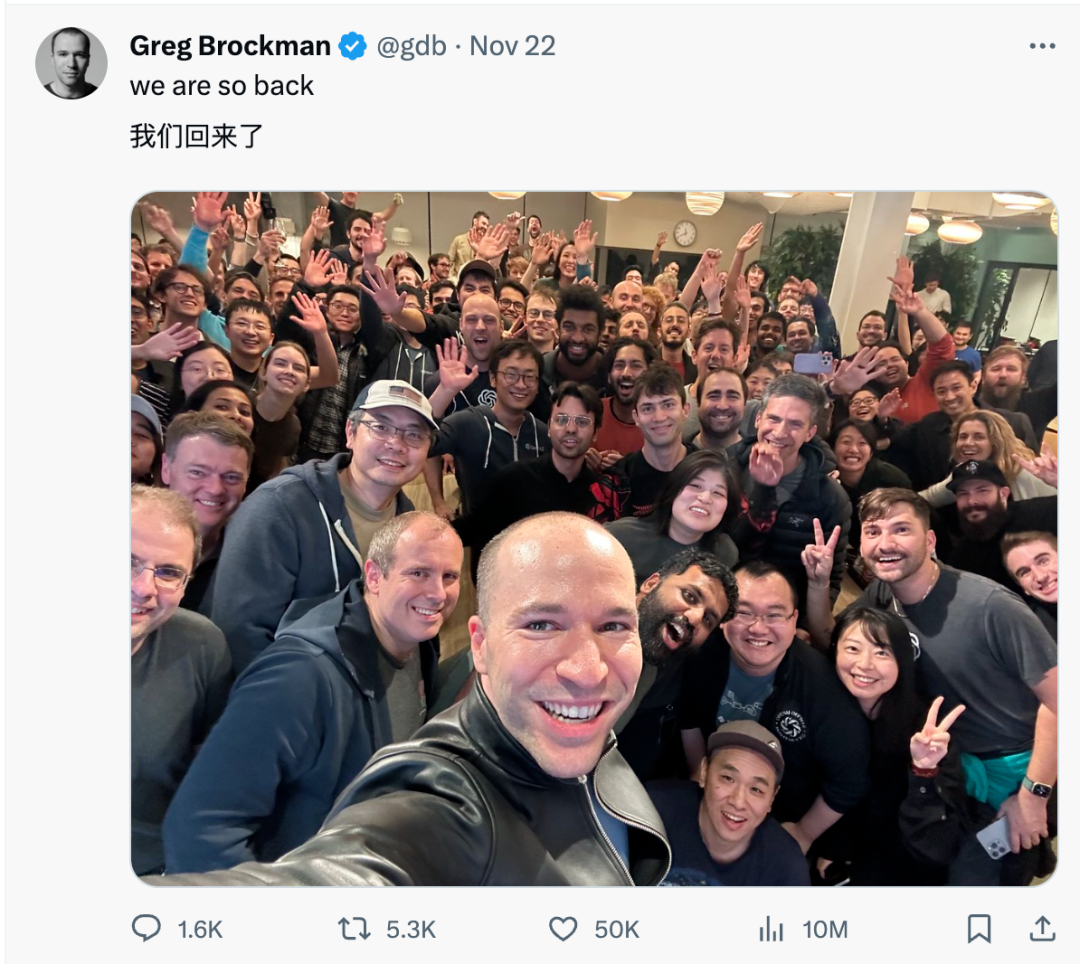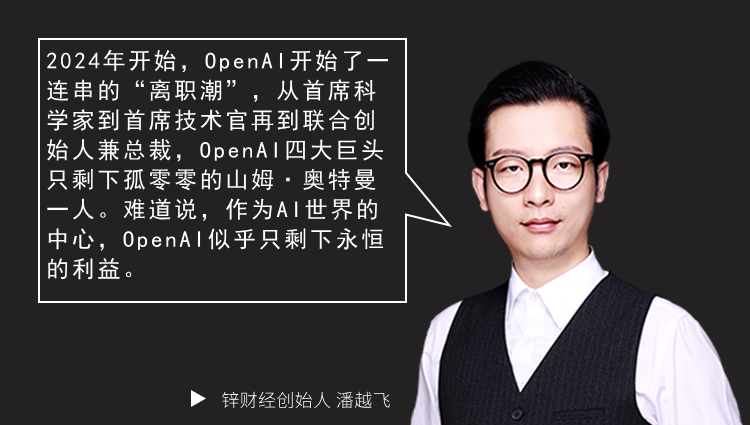Where did OpenAI's co-founders go after leaving Sam Altman?
![]() 10/25 2024
10/25 2024
![]() 552
552

Author: Sun Pengyue
Editor: Dafeng
2024 marks a crucial turning point for OpenAI. In this year, OpenAI has consecutively launched two major model products: GPT-4o at the beginning of the year and Orion (O1-preview) in September. 2024 has also witnessed a steady exodus of key employees from OpenAI. Apart from the departure of various seasoned staff, even three of the four well-known OpenAI co-founders have left, leaving only Sam Altman. In the AI world, it seems that only eternal interests remain.

Mira Murati: From CTO to Interim CEO
On September 26th this year, Mira Murati, the Chief Technology Officer of OpenAI, officially announced her resignation after six and a half years with the company. Murati explained her decision on social media: "I want to make space and time to explore myself. Currently, my top priority is to ensure a smooth transition and maintain the momentum we've built."
In response, Sam Altman stated, "Thank you, Murati, for everything you've done. OpenAI will soon provide details on the transition plan." Murati, who spent six years at OpenAI, was no small figure. With an impressive resume, she graduated from Dartmouth College, a prestigious AI institution in the US, with a degree in Mechanical Engineering. After joining Tesla, she led the team that developed the Model X. She joined OpenAI during Elon Musk's investment, when the company was still relatively unknown with only 40-50 employees. Notably, after Murati's departure, Elon Musk mocked Sam Altman on social media, highlighting her significant impact at both OpenAI and Tesla.
In 2022, Murati became OpenAI's CTO and was hailed by Time magazine as "the creator of ChatGPT." At this year's GPT-4o launch event, she showcased GPT-4o's new features to the world on behalf of Sam Altman. So, why did Murati, with her senior position, strong abilities, impressive resume, and long tenure, suddenly announce her resignation? The root cause lies in internal strife within OpenAI.

Mira Murati
The New York Times revealed that in October last year, Murati expressed concerns to the board about Sam Altman's management style. She believed Altman was adept at "manipulating others," often using other executives to achieve his goals, showing indifference towards those who didn't support his decisions, thereby creating a fearsome work environment.
A month later, OpenAI erupted in civil strife as co-founder Ilya Sutskever, in conjunction with the board, ousted Altman and appointed Murati as interim CEO.
According to The New York Times, more details emerged suggesting that Murati might have been the instigator of this coup. In May this year, Sutskever resigned, followed by Murati's resignation in September, corroborating the newspaper's report. Post-OpenAI, Murati is fundraising for a new AI startup, with negotiations still in their early stages. Sources indicate that given Murati's reputation and the funds required to train proprietary models, her new venture could potentially raise over USD 100 million.

Greg Brockman: The Vanishing OpenAI President
Greg Brockman, the co-founder and president of OpenAI, was a staunch supporter of Sam Altman. Having dropped out of Harvard and MIT, Brockman was renowned for his workaholic nature, reportedly working 60-100 hours per week, with 80% of that time dedicated to coding, earning him the title of "10x Engineer." He later joined fintech company Stripe, where he served as its first CTO, growing the team from 5 to 205 employees.
In December 2015, Brockman, Altman, and Sutskever co-founded OpenAI, forming the early "OpenAI triumvirate": Altman secured funding, Brockman led the management team, and Sutskever oversaw technology development. Brockman spearheaded notable projects early on, including OpenAI Gym and Dota 2 bot OpenAI Five.

Greg Brockman
Amid internal strife at OpenAI in November last year, Brockman was dismissed by the board for his unwavering support of Altman. The fallout was severe; 710 of OpenAI's 770 employees signed an open letter demanding the board's resignation and the reinstatement of Altman and Brockman, highlighting Brockman's substantial influence within the company. Despite regaining control, Brockman has become increasingly absent from OpenAI, with rumors of an extended leave of absence in August for "relaxation and recharge." This move, common among executives before departure in the tech industry, fuels speculation. Currently, Brockman remains silent and uninvolved in OpenAI activities.

Only One of the 11 Co-Founders Remains
Since Sutskever's departure in May, OpenAI has seen a wave of resignations, with at least 17 mid-to-high-level executives, including the Chief Scientist, CTO, Chief Research Officer, and heads of Sora video generation and GPT-4o multimodal models, leaving the company. Seven senior executives joined competitor Anthropic, including co-founder John Schulman and former head of the superalignment team Jan Leike. Ten mid-level technical leaders departed, with two joining Google. Of the remaining three co-founders, Brockman and Wojciech Zaremba announced leaves of absence with uncertain return dates, leaving only Altman actively working.
With severe losses in senior management and technology, even the board was disbanded, with only two members remaining in the new board. This has consolidated Altman's power, giving him sole authority over technology, research, products, personnel, funding, and public relations.

The Four Giants of OpenAI
As the old guard crumbles, a new team is already being recruited. OpenAI has been active in the job market, with hires including Microsoft AI Vice President Sebastien Bubeck, former Instagram product manager Kevin Weil as Chief Product Officer, and former NextDoor CEO Sarah Friar as Chief Financial Officer. OpenAI is infusing fresh blood at all levels, with its workforce now exceeding 1,700 employees, more than double its size at the beginning of the year. Amidst staff reductions and recruitment, OpenAI seems focused solely on personnel matters. It remains to be seen when the highly anticipated ChatGPT 5.0 and O1 models will officially launch.









